Vintage Treasures: Courtship Rite by Donald Kingsbury
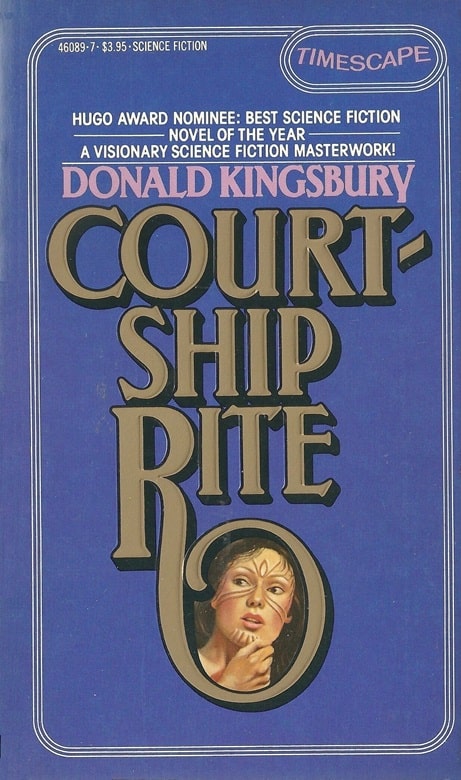 |
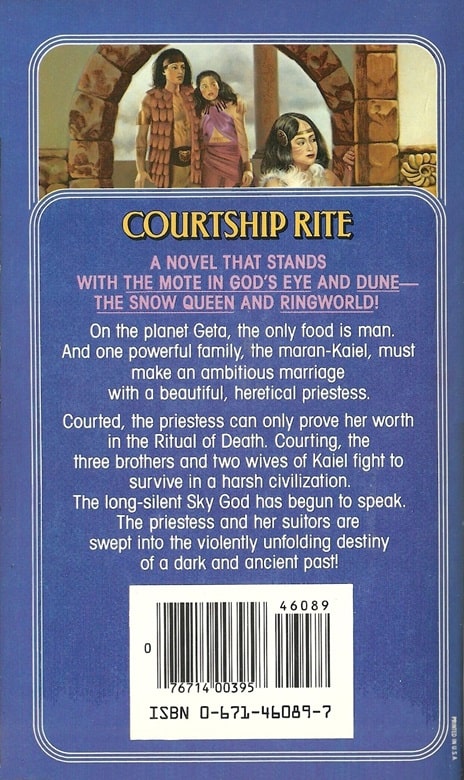 |
Courtship Rite (Timescape/Pocket Books, September 1983). Cover by Rowena Morrill
I still remember the buzz of excitement in Ottawa fandom when a young local writer named Charles de Lint sold his first novel to Ace Books. Riddle of the Wren wasn’t particularly groundbreaking — not like the breakout books soon to come from Charles — but everyone read it, and it was passed around and enjoyed with the kind of hometown pride that quickly catapulted Charles into literary stardom, at least on the local Ottawa scene.
The kind of thing didn’t happen often in Ottawa in those days. In fact, the only thing like it was the fuss made about Donald Kingsbury, a math professor at McGill University in Montreal, who burst out of the gate in the late 70s with a series of major award noms for his early fiction. His first novel Courtship Rite won the Locus and Compton Crook Awards for Best First Novel, and was shortlisted for the Hugo Award. In 2016 it won the Prometheus Hall of Fame Award. That’s the sort of thing that got Canadian fans worked up — and that hasn’t changed much over the years.
[Click to bring up larger images rite away.]
Courtship Rite (Timescape Books, July 1982). Cover by Rowena Morrill
Unlike Charles de Lint, Donald Kingsbury didn’t go on to become one of the biggest writers in the genre. In fact, he produced only two more novels, and the long-awaited sequel to Courtship Rite, The Finger Pointing Solward, became one of the most famous unpublished novels in science fiction. But his early fiction was so extraordinary he’s still celebrated and discussed today.
Kingsbury began exploring the world of Courtship Rite with his second published story, “Shipwright,” which Ben Bova bought for Analog in April 1978. Terry Carr selected it for the inaugural volume of The Best Science Fiction Novellas of the Year, alongside the famous “Seven American Nights” by Gene Wolfe, “Fireship” by Joan D. Vinge, and “The Persistence of Vision” by John Varley. Kingsbury’s story received immediate attention, even among those enduring classics.
Analog Science Fiction/Science Fact, April 1978, containing
“Shipwright” by Donald Kingsbury. Cover by Rick Sternbach
Here’s an excerpt from Timothy’s 2021 review of The Best Science Fiction Novellas of the Year #1 at Goodreads.
For a couple of years, Terry Carr convinced his publishers to spin off the Best Novellas of the Year from his annual Best SF anthologies. If not for the unfortunate inclusion of the Bishop, this collection of 1978 stories might be the highest quality sf anthology ever assembled, so I am just going to rate this as if it only contains the 5 great stories. Well, anyway, that’s how much I think of the Wolfe and Priest stories in here.
Kingsbury… this entertaining gender power dynamic reversal story wins my personal theoretical award for best use of Japanese poetry in sf.
Wolfe… to my mind, Wolfe’s very best shorter work … one of the greatest sf novellas ever written … what really happened on these six nights? What happened on the missing seventh night?
Vinge… tackles the merging of human and computer sentience in a highly enjoyable manner that, against the odds, barely seems dated.
We discussed Carr’s The Best Science Fiction Novellas of the Year #1 in its own Vintage Treasures article back in 2017.
Four years after “Shipwright” appeared, Kingsbury returned to the world of Geta with Courtship Rite. The novel was serialized in three parts in Analog by new editor Stanley Schmidt, starting with the February 1 issue, with a gorgeous cover by John and Val Lakey.
Analog Science Fiction/Science Fact,
February 1, 1982. Cover by John Lakey and Val Lakey
Courtship Rite appeared in hardcover from Timescape five months later, and was one of the most acclaimed SF novels of the year. Here’s a sample review from 1982, this one from Kirkus Reviews.
On planet Geta, a long-abandoned human colony struggles to survive amid a hostile, genetically incompatible local biota, and famine is endemic. So the Getans have evolved various social systems based on cannibalism, whereby those low in “”kalothi”” (Darwinian survival ability) sacrifice themselves for the common good: bodies are food; indiscriminate slaughter (i.e. war) is unthinkable; the ruling priestly clans worship an ancestral spaceship and practice grisly rituals… wWthin this deep, subtle, always logical construction, move three ambiitious Kaiel brothers: impetuous Joesai, calculating Hoemei, and peacemaker Gaet, who hope to complete their group marriage with the inception of physicist Kathein. But Prime Predictor Aesoe, coveting Kathein, orders them instead to approach Oelita, a heretical young woman who exerts control over a neighboring seacoast… Reminiscent of Frank Herbert (short, intense chapters, didactic asides), this first novel by a veteran sf storyteller is a feat of nonchalant, assured complexity: rich, teeming, somewhat weak only in characterization — and decidedly not for the squeamish.
Unlike a lot of popular science fiction of the era, Courtship Rite is still read and enjoyed today. Over at Tor.com (now Reactor), Jo Walton had one of the more interesting takes, saying Courtship Rite,
is about a distant generation of colonists on a planet with no usable animals. This is the book with everything, where everything includes cannibalism, polyamory, evolution and getting tattoos so your skin will make more interesting leather when you’re dead.
Reactor is still having trouble with both their search engine and older links, so I don’t have a working link for Jo’s excellent review. As soon as I do, I’ll include it here.
Courtship Rite, Science Fiction Book Club 50th Anniversary
Collection #29 (SFBC, July 2006). Cover by Jim Burns
Despite his very sparse output, virtually everything Kingsbury wrote received almost immediate critical notice. As John Clute writes in The Science Fiction Encyclopedia,
He began publishing sf with “The Ghost Town” in Astounding for June 1952; he produced relatively little for nearly 30 years, though his intermittent appearances in Astounding, with both fiction and nonfiction, were generally noticed. What could not have been noted – because of the sparseness of his production and the wide-ranging nature of his underlying construct – was that almost everything he wrote shared a common Future History, somewhere into the middle of which his first novel, Courtship Rite (1982; vt Geta 1984), fitted smoothly; indeed, the polished sweep and exuberance of this large, epic Planetary Romance must have owed something to Kingsbury’s long familiarity with its sustaining Universe. The planet Geta is a venue amply complex enough to contain several warring cultures, for whom all aspects of life are agonistic; complicated group marriages… an elaborate ethical and ecological justification of cannibalism in a world of terrible scarcity… since native flora and fauna are almost uniformly toxic; and the highly productive worship of a God in the sky (God being, in fact the Starship that seeded the world, now in standby orbit) who rewards worship by raining down computer chips full of precious data… The short story “Shipwright” (April 1978 Analog) is set in the same universe as Courtship Rite, as is The Finger Pointing Solward, which Kingsbury began writing in the 1950s…
The Finger Pointing Solward has its own fascinating saga.
The Finger Pointing Solward, artwork by Donato Giancola
Kingsbury revealed some details about the planned sequel to Courtship Rite, saying in a September 1982 interview with Robert J. Sawyer that he was still polishing it. An 18-page excerpt (titled “The Cauldron”), set 500 years after the first volume, appeared in the 1994 book Northern Stars: The Anthology of Canadian Science Fiction, edited by Glenn Grant and David G Hartwell.
“The Cauldron” remains the only published portion of The Finger Pointing Solward; the novel was never completed.
At one point it was so close to completion that Tor commissioned artist Donato Giancola to create a cover for it (see above). In 2011, after we purchased the rights to a terrific Donato cover for Black Gate 15, he offered us the rights to the art for Finger Painting Solward, and I intended to use it as the cover for Black Gate 16, containing the first installment of my novel The Robots of Gotham.
The Moon Goddess and the Son (Baen, December 1986). Cover by David Mattingly
Alas, Black Gate 16 never appeared. Fortunately Brad Beaulieu snapped up the rights for the cover for his excellent second collection In the Stars I’ll Find You, saving Donato’s art from unjust obscurity.
Kingsbury produced two other novels. The first was The Moon Goddess and the Son (Baen, 1986), in which the Soviet Union secretly launches a full-scale space station into orbit, triggering a dramatic new space race, a space boom, and an economic expansion unprecedented in US history.
The novella version of “The Moon Goddess and the Son” was the cover story of the December 1979 Analog. It was precisely the kind of libertarian space fantasy Analog readers adored, and it placed third for both the Analog Reader Award and the Hugo Award for Best Novella in 1980.
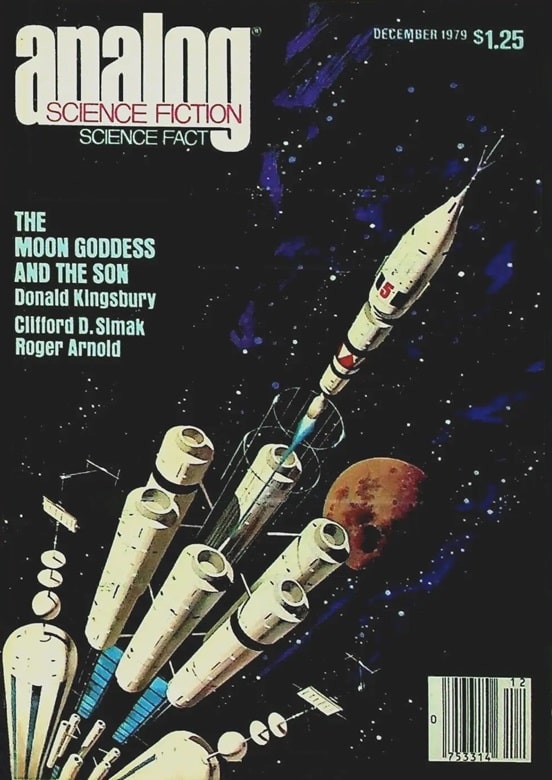 |
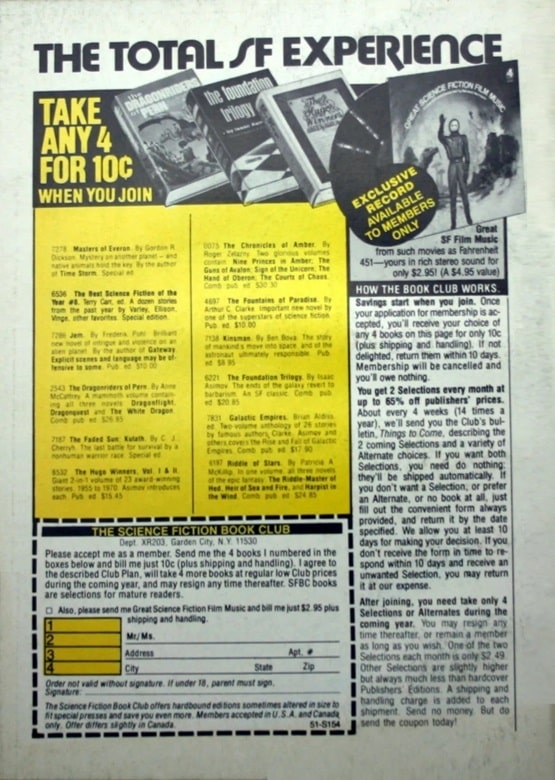 |
Analog Science Fiction/Science Fact, December 1979, containing
“The Moon Goddess and the Son.” Cover by Vincent Di Fate
Kingbury’s last novel was Psychohistorical Crisis (Tor, 2001), an homage to Asimov’s Foundation books that explores the late development of the science of Psychohistory in the Second Empire (specifically the 761st Century, long after the events of Asimov’s trilogy), and the realization that the mathematicians have covertly influenced events to bring about the future they desired.
Not too surprisingly, Kingsbury published it as a novella first, as “Historical Crisis” in Gregory Benford’s excellent anthology Far Futures in 1995. The much expanded novel won the 2002 Prometheus Award, despite the fact that Asimov’s estate refused to allow Kingsbury to publish the book as an official sequel to his famous series.
Psychohistorical Crisis (Tor, December 2001). Cover by Donato
Donald Kingsbury has published virtually nothing in the 21st Century. His last work of fiction was Psychohistorical Crisis in 2001.
I think Courtship Rite is still the right place to start if you’re interested in exploring his fiction. It’s still his most wildly discussed work — and in fact William Stoddard has offered us a full review for his next big feature here at Black Gate. Stay tuned.
Courtship Rite was published in hardcover by David G. Hartwell’s Timescape imprint in July 1982, and reprinted in paperback in September 1983. It is 409 pages in paperback, with a cover price of $3.95. The cover is by Rowena Morrill. It has been out of print since 2006, and there is no digital edition.
See all our recent Vintage Treasures here.
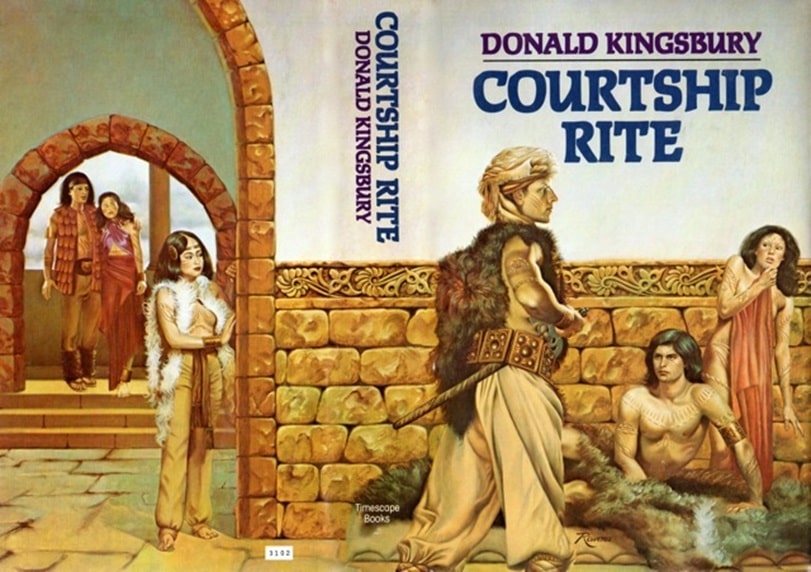
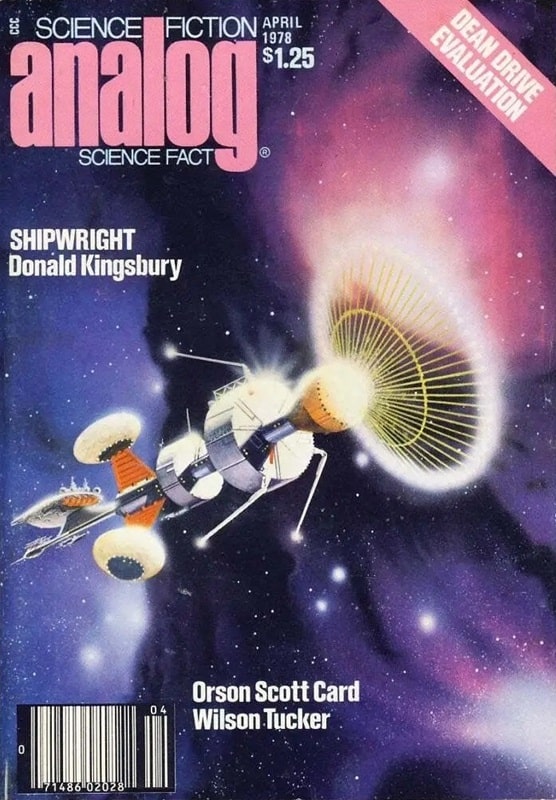
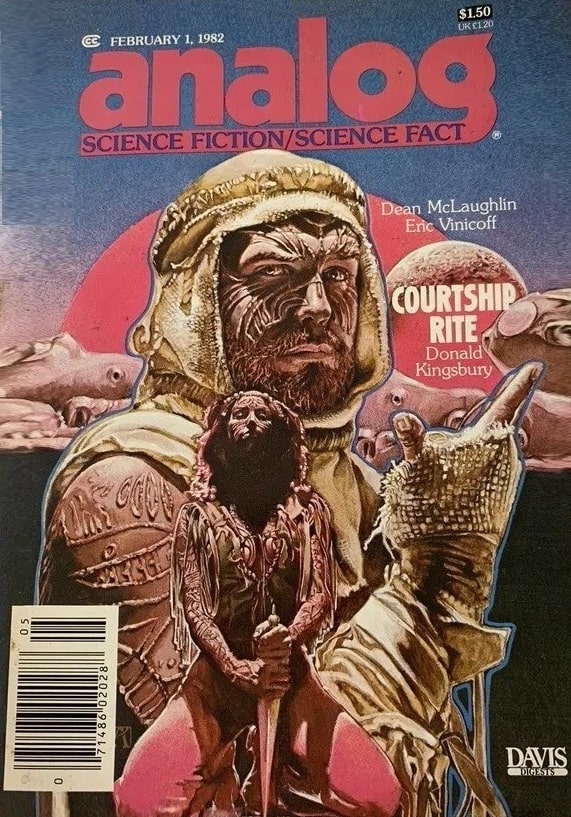
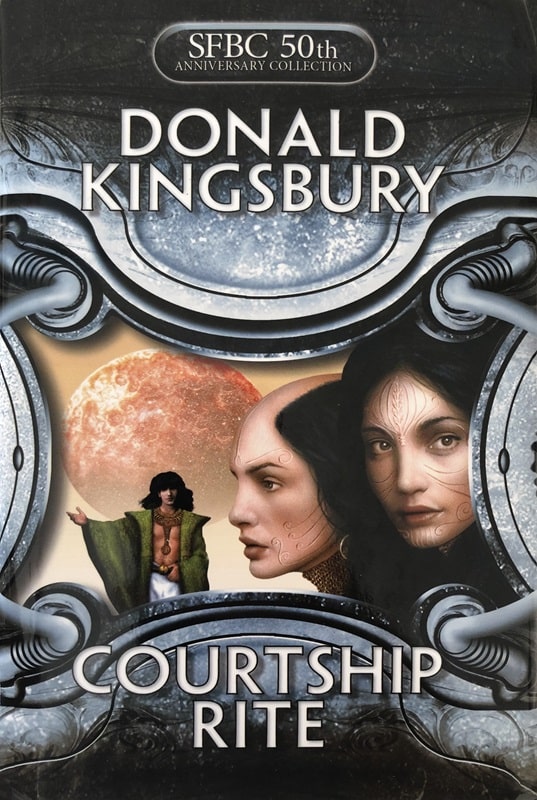
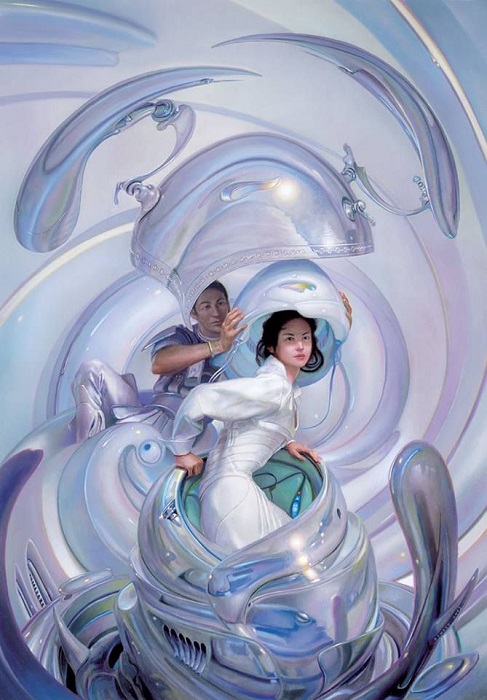
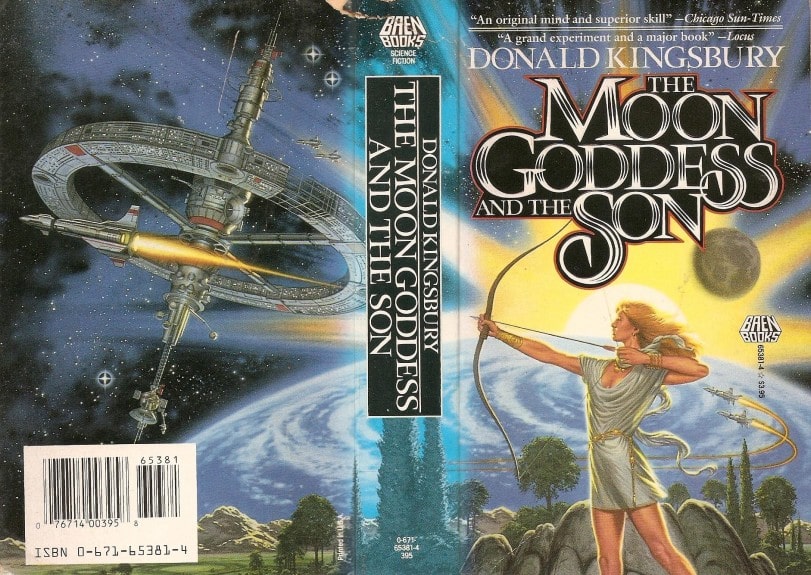
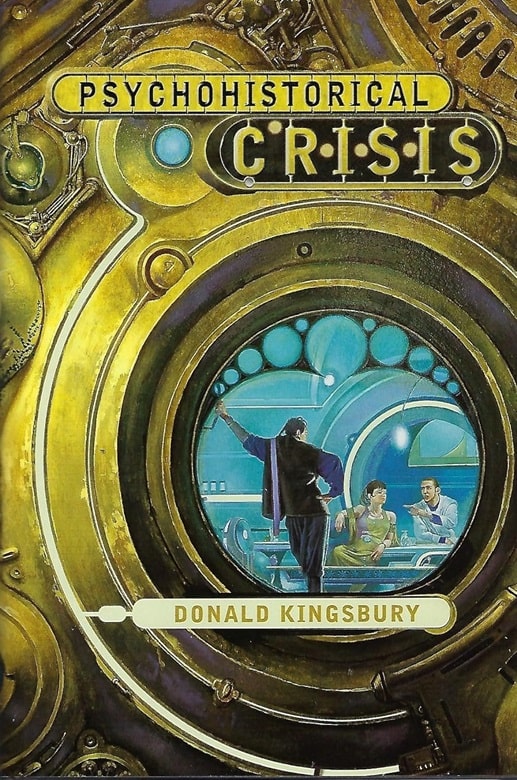
There is a small mistake here – Psychohistorical Crisis is not about the “early” development of psychohistory, it is set in the Second Galactic empire, some 2700 years after Seldon. This is why “prequel” in the next paragraph should be “sequel”.
Andrei,
Thanks for the comment! You are entirely correct, and I have corrected the text above.
Thanks!
I like Psychohistorical Crisis a lot, though not as much as Courtship Rite; it’s an intellectually fascinating work. I read it not simply as a sequel to the Foundation novels, but as a deconstruction of them, in which Kingsbury calls in question both the epistemological model of science Asimov relies on and its political implications. That kind of intellectual dialogue is one of the pleasures that science fiction is especially suited to providing.
Bill,
True that! Science fiction writers are often in dialog in their published work. Perhaps it springs from the fact that not so long ago SF writers were essentially a small community that often enjoyed actual dialog, at SF cons and the like.
Science fiction has grown so much over the past five decades that meaningful dialog between writers is much harder these days — and even when it happens, I think it gets noticed much less than it used to.
And Bill — I hope you’re still working on that Courtship Rite review! I’d really love to see it. 🙂
Like William, I read PSYCHOHISTORICAL CRISIS as more of a deconstruction of the Foundation Trilogy — in essence, a complete rewrite of the original with better science and weirder politics and creepier sexual relationships. (Of course, there were essentially no sexual relationships in the Foundation Trilogy!)
I’m kind of afraid to revisit COURTSHIP RITE, which really impressed me at the time.
I have found everything Kingsbury wrote to be fascinating and thought-provoking, even when I was annoyed by some of it. And I sincerely hope that THE FINGER POINTING SOLWARD appears at some point — possibly posthumously, I would imagine.
I noted when Chan Davis died the parallels between Davis and Kingsbury — both American natives, both emigrants to Canada, both math professors at Canadian universities, both not terribly prolific writers of provocative SF, and of very similar ages — before Davis died, they were two of the oldest living SF writers. And with politics essentially completely opposite!
Rich,
I’ve never read Chan Davis. You may have been the one to make me aware of him! When I read his Wikipedia entry I remembered seeing him on the cover of Astounding (for his first published story, “The Nightmare,” in the May 1946 issue.)
I hope The Finger Pointing Solward is published some day, but I’m not as optimistic as you. 🙁